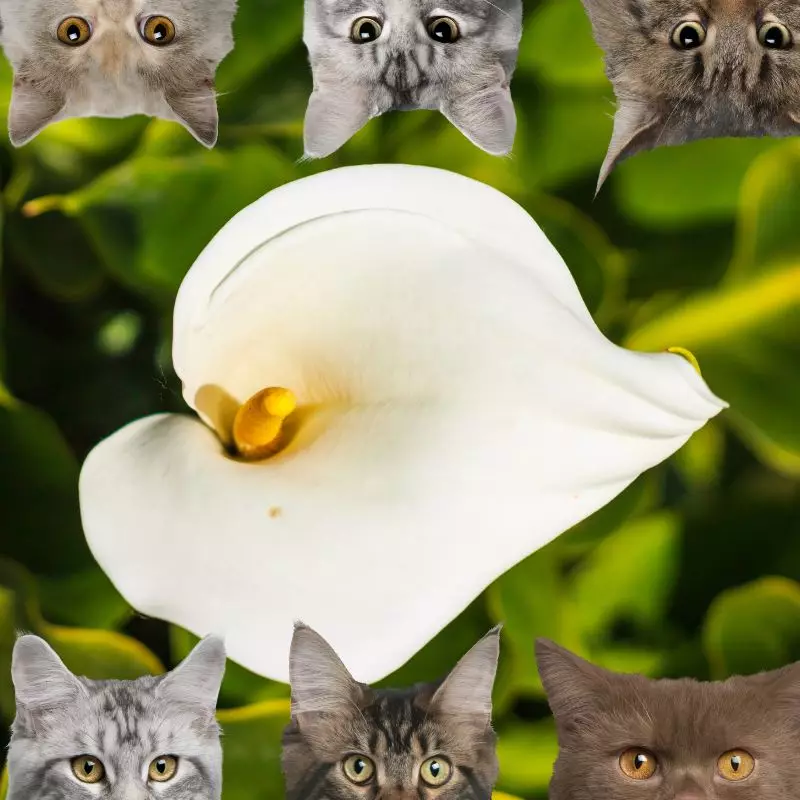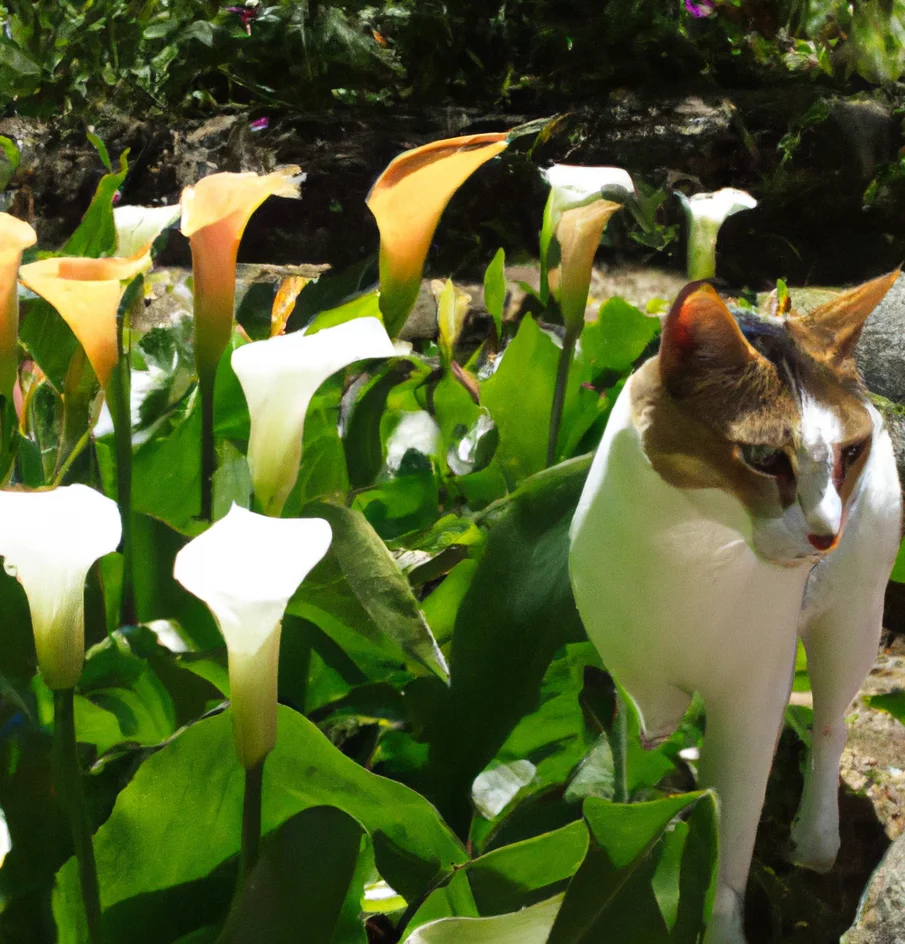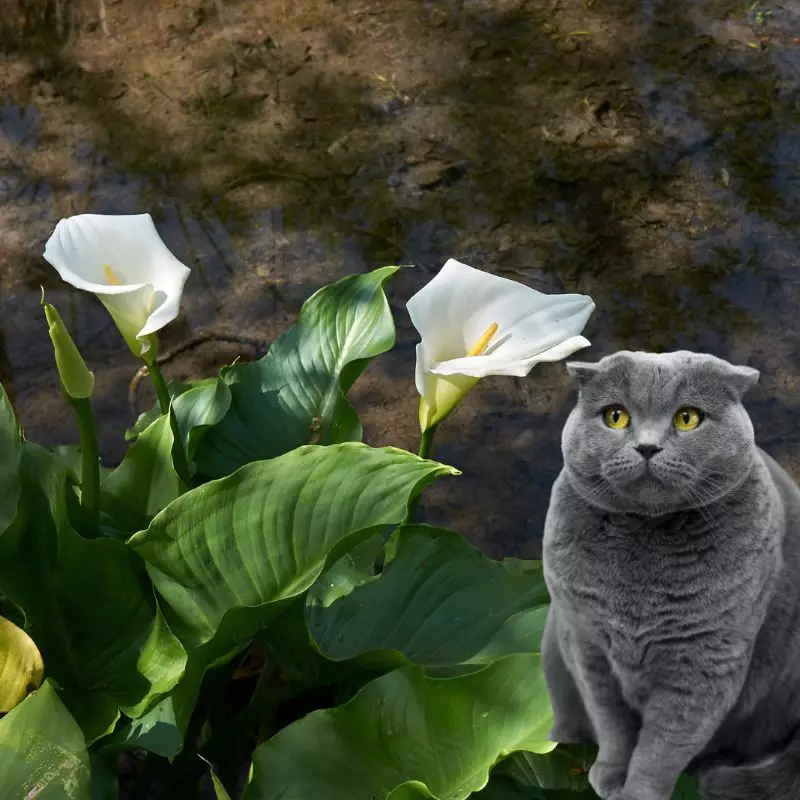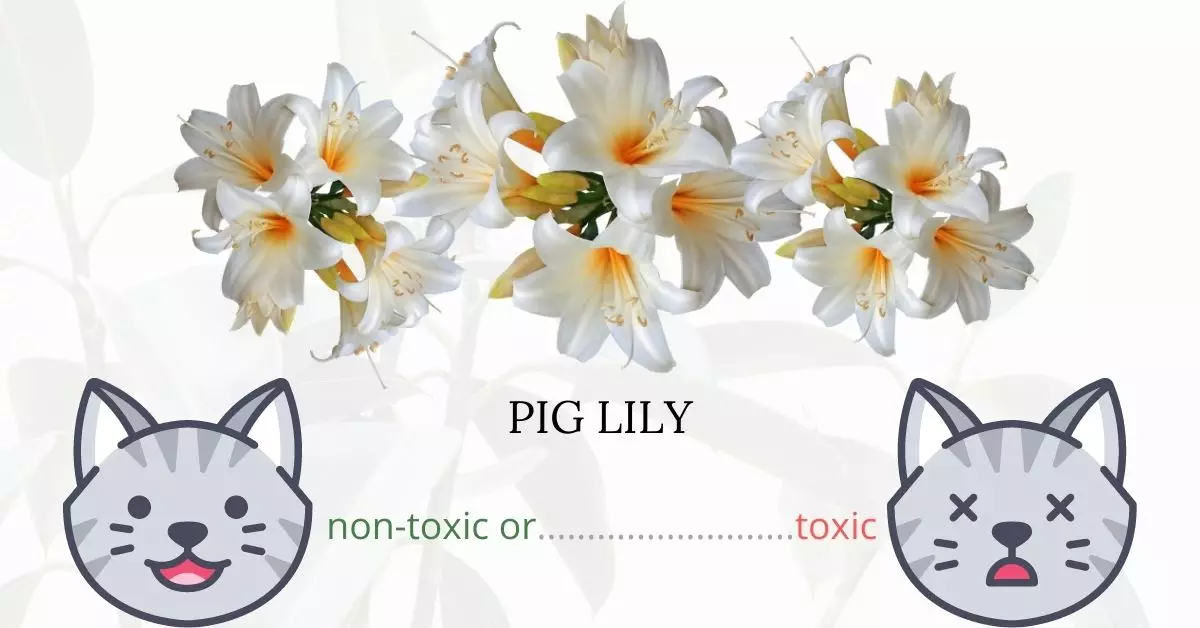Pig lilies, indeed, pose a toxic threat to cats due to their content of insoluble calcium oxalates, substances that are prevalent in many members of the Araceae plant family.
This article, curated in collaboration with a cadre of seasoned Doctors of Veterinary Medicine (DVMs), strives to present precise and contemporaneous information regarding the potential hazards linked with various flora, focusing particularly on Pig Lilies, and their impact on feline companions. To guarantee accuracy and reliability, we have also engaged in extensive research, consulting high-authority sources like ASPCA and PetMD, to glean insights on each plant discussed.
When a cat ingests parts of a pig lily, the oxalate crystals within the plant adhere to the animal’s tissues, leading to significant inflammation and discomfort as they reach and bind to the stomach lining. This results in noticeable swelling, redness in the mouth, and, in some instances, vomiting in cats, making it imperative for pet owners to exercise caution and keep such plants out of their pets’ reach.
Clinical Signs of Pig Lily Poisoning in Cats

When a cat comes into contact with, inhales the scent of, or, more significantly, ingests parts of the Pig Lily plant, various clinical signs may manifest. Each symptom has its underlying cause rooted in the plant’s toxic components:
- Oral Irritation: Pig Lilies contain insoluble calcium oxalates, which when chewed or ingested, will initiate an immediate inflammatory response in the mouth. This results in overall oral discomfort for the cat.
- Acute Burning and Irritation of Mouth, Tongue, and Lips: The sharp calcium oxalate crystals can mechanically damage the soft tissues of the mouth, leading to an acute burning sensation and localized irritation.
- Excessive Drooling: This is the body’s reflex response to try to rid the mouth of the offending substance and mitigate the effects of the toxic components. Salivation can help dilute and wash away the irritants, offering some relief.
- Vomiting: Once ingested, if the oxalate crystals reach the stomach and bind to its lining, it can induce a protective vomiting response in the cat. This is the body’s way of trying to expel the harmful substance.
- Swallowing Difficulties (Dysphagia): As the plant’s oxalate crystals cause significant inflammation and irritation in the mouth and throat, it may become painful or difficult for the cat to swallow. This is a protective mechanism to prevent further ingestion and potential injury.
It’s paramount for pet owners to be observant and seek veterinary care immediately if they suspect their cat has come into contact with or ingested any part of the Pig Lily.
First Aid and Treatment of Pig Lily Poisoning in Cats

If a cat has eaten a pig lily, remove any leftover plant from its mouth and flush it with clean water. Feeding your cat a yogurt-based food for a few days will relieve the discomfort while also dislodging the crystals stuck in the intestines. If the symptoms persist, the veterinarian may decide to start the cat on intravenous fluid treatment to replace lost fluids and counteract the effects of dehydration.
Other treatments may also be done by the veterinarian depending on the cat’s illness. Activated charcoal may be administered and gastric lavage may also be performed. Medications to ease other symptoms may also be given by the vet.
Recovery from Pig Lily Poisoning in Cats

Most cats recover quickly from pig lily poisoning, with most regaining their health in less than a week. However, older cats’ digestive systems may take longer to fully recover.
After treatment, discuss post-care treatment with the vet. He may recommend changes in the cat’s diet as its stomach is still sensitive to the treatment.
Prevention of Pig Lily Poisoning in Cats
Remove any pig lilies from your gardens and keep them out of your house. Limiting your cat’s access to the outdoors reduces the likelihood of your cat coming into contact with pig lilies and other harmful plants that may be blooming in your area.
If you love plants but have cats at home, check out these lists:





